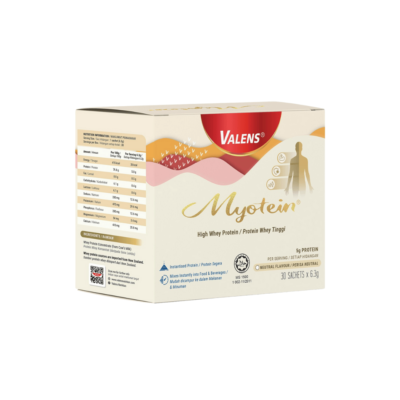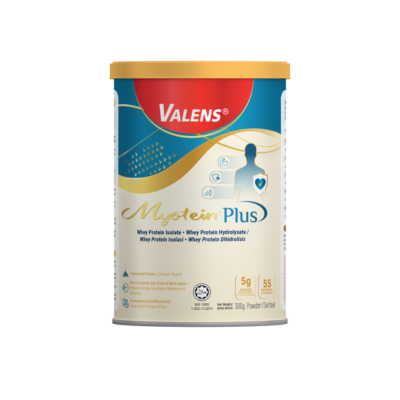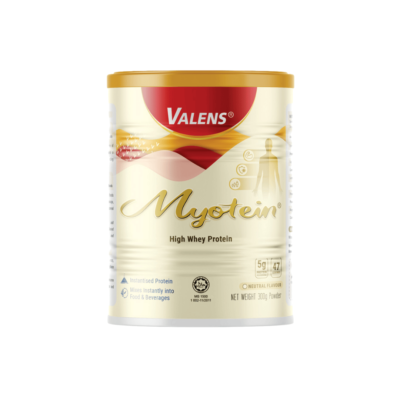This article has been professionally reviewed by Dt Wen Ni Sin, a registered dietitian of Malaysian Dietitians Association (MDA).
We’ve all been there: the dinner table battleground, where a tiny human wields a fork like a weapon against anything remotely green or unfamiliar. Picky eating is a common phase in childhood, but for parents, it can lead to worry, especially about getting enough essential nutrients like protein [1].
So, how do you know if your picky eater is missing out on protein, and what can you do about it?
Why Protein Matters
Protein is the building block of life, playing a vital role in everything from muscle growth and repair to immune function and cell development [2]. For young children, who are constantly growing and learning, protein is especially crucial. According to a study published in the American Journal of Clinical Nutrition, ensuring adequate protein intake in children leads to better growth, satiety, and bone health [3].
Signs of Protein Deficiency
While a blood test can definitively diagnose protein deficiency, some signs to watch for include:
- Stunted growth: If your child seems to be falling behind their growth curve, it could be a sign they’re not getting enough protein. [4, 5]
- Fatigue and weakness: Protein helps fuel the body, and a lack of it can lead to low energy levels. [6]
- Frequent illnesses: Protein plays a vital role in the immune system, so a deficiency can make children more susceptible to infections. [7]
- Brittle hair and nails: Protein is essential for healthy hair and nails, so weakness or breakage could be a clue. [8]

Your child’s height and growth can be a good indicator of adequate protein intake and overall nutrition.
Protein Hacks for Your Picky Eater
The good news is there are plenty of ways to incorporate protein into your picky eater’s diet. Here are some ideas:
- Get creative with classics: Mac and cheese gets a protein boost with shredded chicken and high protein vegetables such as peas, broccoli or spinach hidden within.
- Think outside the lunchbox: Ditch the boring sandwich! Try a spring roll filled with vermicelli noodles, shredded vegetables, and a touch of cooked shrimp or shredded chicken.
- Smoothie solutions: Pack in protein with a delicious smoothie made with yogurt, fruit, and a scoop of protein powder.
- Snack smart: Hard-boiled eggs, cheese sticks, and yogurt parfaits or peanut butter with granola and oats are healthy, protein-rich snacks.
- Hide it and seek it: Sneak shredded chicken, lentils or protein powder into soups or gravies, or mix them into their favorite dips.
- Protein powder supplement: Consider a pediatrician-approved protein supplement, especially if your child struggles to meet their daily protein needs through food alone. Choose a high-quality protein powder which you can easily add into your child’s meals or beverages. Learn more about Protein Powder for Picky Eaters.
Remember:
- Focus on variety: Offer a rainbow of fruits and vegetables alongside protein sources to ensure a balanced diet.
- Make it fun: Involve your child in meal prep (age-appropriately). Let them choose toppings and experiment with shapes.
- Be patient: Changing habits takes time. Don’t force it and celebrate small victories.
If you’re still concerned about your picky eater’s protein intake, consult a pediatrician or dietitian.
With a little creativity and these tips, you can ensure your little one gets the protein they need to grow strong and healthy.
References
- Hudson, J. L., Baum, J. I., Diaz, E. C., & Børsheim, E. (2021). Dietary Protein Requirements in Children: Methods for Consideration. Nutrients, 13(5), 1554. https://doi.org/10.3390/nu13051554
- Carbone, J. W., & Pasiakos, S. M. (2019). Dietary Protein and Muscle Mass: Translating Science to Application and Health Benefit. Nutrients, 11(5), 1136. https://doi.org/10.3390/nu11051136
- Garcia-Iborra, M., Castanys-Munoz, E., Oliveros, E., & Ramirez, M. (2023). Optimal Protein Intake in Healthy Children and Adolescents: Evaluating Current Evidence. Nutrients, 15(7), 1683. https://doi.org/10.3390/nu15071683
- Braun, K. V., Erler, N. S., Kiefte-de Jong, J. C., Jaddoe, V. W., van den Hooven, E. H., Franco, O. H., & Voortman, T. (2016). Dietary Intake of Protein in Early Childhood Is Associated with Growth Trajectories between 1 and 9 Years of Age. The Journal of nutrition, 146(11), 2361–2367. https://doi.org/10.3945/jn.116.237164
- Endrinikapoulos, A., Afifah, D. N., Mexitalia, M., Andoyo, R., Hatimah, I., & Nuryanto, N. (2023). Study of the importance of protein needs for catch-up growth in Indonesian stunted children: a narrative review. SAGE open medicine, 11, 20503121231165562. https://doi.org/10.1177/20503121231165562
- Dipasquale, V., Cucinotta, U., & Romano, C. (2020). Acute Malnutrition in Children: Pathophysiology, Clinical Effects and Treatment. Nutrients, 12(8), 2413. https://doi.org/10.3390/nu12082413
- Iddir, M., Brito, A., Dingeo, G., Fernandez Del Campo, S. S., Samouda, H., La Frano, M. R., & Bohn, T. (2020). Strengthening the Immune System and Reducing Inflammation and Oxidative Stress through Diet and Nutrition: Considerations during the COVID-19 Crisis. Nutrients, 12(6), 1562. https://doi.org/10.3390/nu12061562
- Guo, E. L., & Katta, R. (2017). Diet and hair loss: effects of nutrient deficiency and supplement use. Dermatology practical & conceptual, 7(1), 1–10. https://doi.org/10.5826/dpc.0701a01









